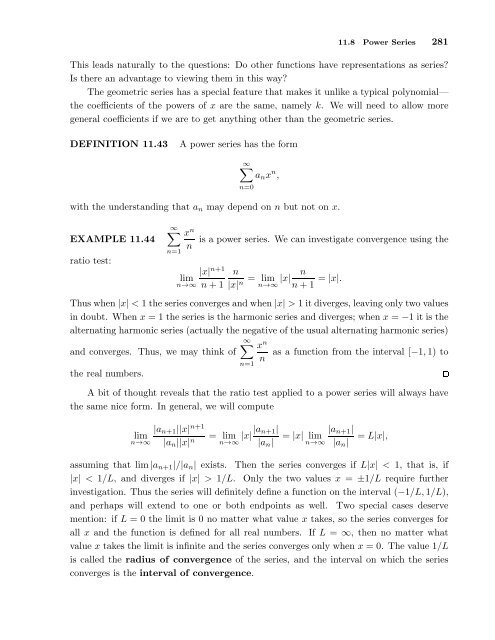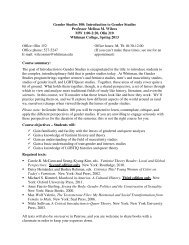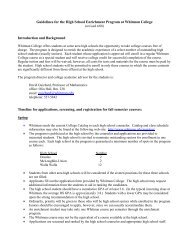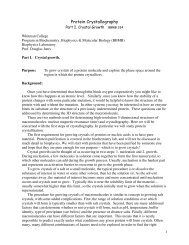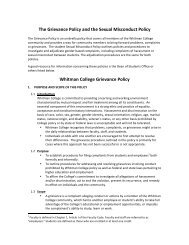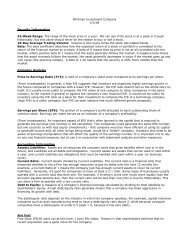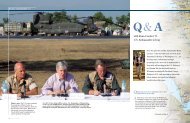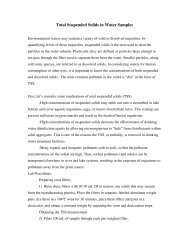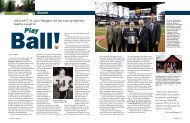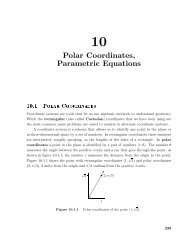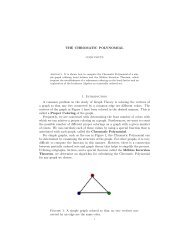Sequences and Series
Sequences and Series
Sequences and Series
Create successful ePaper yourself
Turn your PDF publications into a flip-book with our unique Google optimized e-Paper software.
11.8 Power <strong>Series</strong> 281This leads naturally to the questions: Do other functions have representations as series?Is there an advantage to viewing them in this way?The geometric series has a special feature that makes it unlike a typical polynomial—the coefficients of the powers of x are the same, namely k. We will need to allow moregeneral coefficients if we are to get anything other than the geometric series.DEFINITION 11.43 A power series has the form∞∑a n x n ,n=0with the underst<strong>and</strong>ing that a n may depend on n but not on x.EXAMPLE 11.44ratio test:∞∑n=1x nnis a power series. We can investigate convergence using the|x| n+1 nlimn→∞ n+1 |x| n = lim |x| nn→∞ n+1 = |x|.Thuswhen|x| < 1theseriesconverges<strong>and</strong>when|x| > 1itdiverges, leavingonlytwo valuesin doubt. When x = 1 the series is the harmonic series <strong>and</strong> diverges; when x = −1 it is thealternating harmonic series (actually the negative of the usual alternating harmonic series)<strong>and</strong> converges. Thus, we may think ofthe real numbers.∞∑n=1x nnas a function from the interval [−1,1) toA bit of thought reveals that the ratio test applied to a power series will always havethe same nice form. In general, we will compute|a n+1 ||x| n+1lim = limn→∞ |a n ||x| |x||a n+1|n n→∞ |a n ||a n+1 |= |x| limn→∞ |a n |= L|x|,assuming that lim|a n+1 |/|a n | exists. Then the series converges if L|x| < 1, that is, if|x| < 1/L, <strong>and</strong> diverges if |x| > 1/L. Only the two values x = ±1/L require furtherinvestigation. Thus the series will definitely define a function on the interval (−1/L,1/L),<strong>and</strong> perhaps will extend to one or both endpoints as well. Two special cases deservemention: if L = 0 the limit is 0 no matter what value x takes, so the series converges forall x <strong>and</strong> the function is defined for all real numbers. If L = ∞, then no matter whatvalue x takes the limit is infinite <strong>and</strong> the series converges only when x = 0. The value 1/Lis called the radius of convergence of the series, <strong>and</strong> the interval on which the seriesconverges is the interval of convergence.


